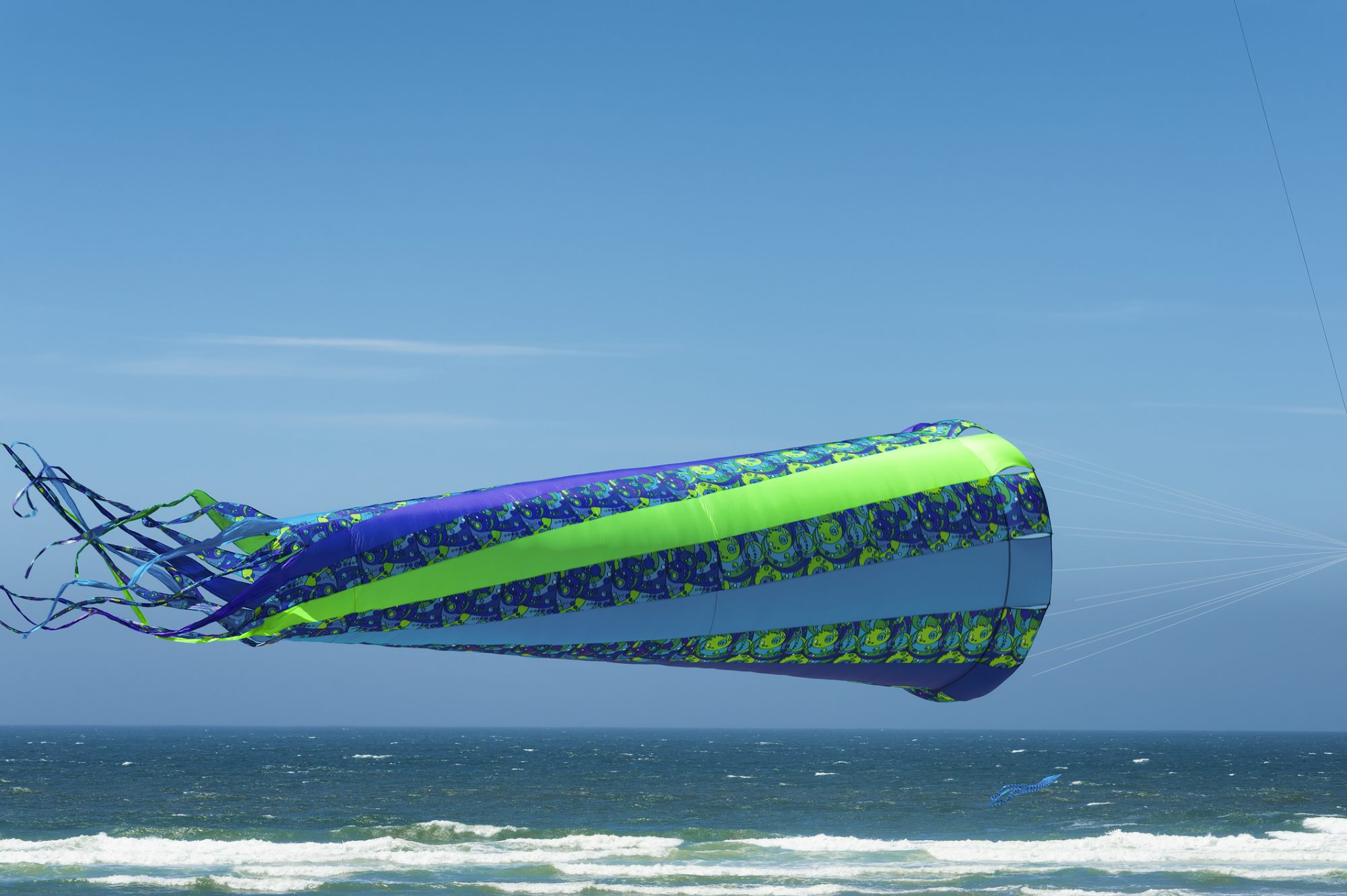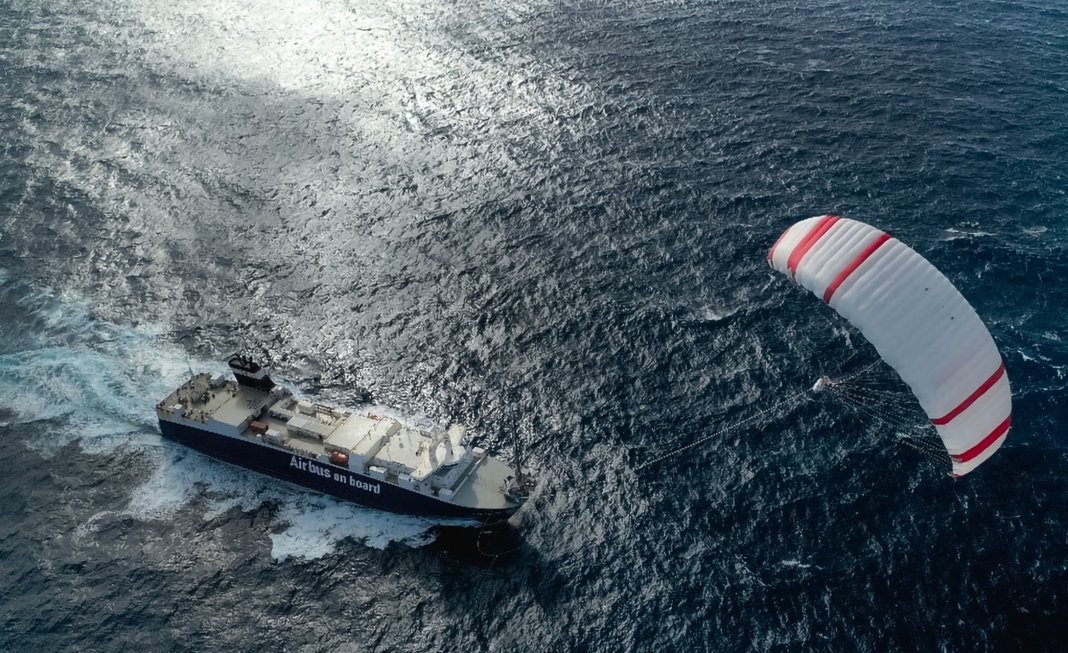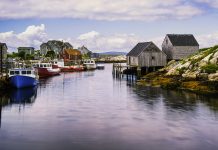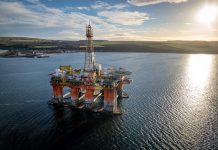French company Airseas has introduced an innovative solution to reduce fuel consumption and reduce carbon emissions in the shipping industry
The Seawing, a colossal kite spanning 1,000 square meters and soaring 300 meters above the water, aims to harness wind power to propel cargo ships across the ocean.
The kite, similar to a parafoil used in kitesurfing, is launched and retrieved through a foldable mast.
Its flight is controlled by autopilot software situated in a box beneath the kite, connected to the ship by a 700-meter-long cable that provides power and data transmission.
Successful cargo ship tests and industry interest
Airseas has conducted successful tests, with a smaller 250-square-meter version of the Seawing towed by a cargo ship across the Atlantic.
The company has secured funding from the European Union and received orders from Airbus and Japanese shipping company “K” Line.
With a goal of achieving full operational readiness by the end of 2025, Airseas aims to revolutionise the shipping industry.
Overcoming challenges to reduce carbon emissions
While the technology is technically feasible, industry acceptance remains a challenge. Dr. Richard Pemberton from the University of Plymouth recognises the potential of wind-assisted shipping but emphasizes the need for widespread adoption.
The Seawing is most effective on cross-Pacific and Atlantic routes, as well as north-south routes, potentially reducing fuel consumption by 20% for a significant portion of global shipping trade.
Enabling future green fuels for low carbon emissions
One crucial factor affecting industry acceptance is the cost of implementation, which is heavily influenced by fuel prices.
Rising oil prices often lead to increased interest in wind-assisted shipping. Airseas acknowledges this and highlights that customers typically recover the installation costs within two to five years through fuel savings.
Moreover, the technology facilitates the adoption of green fuels, making them more competitive and reducing the amount of fuel required, a significant hurdle in the transition to sustainable shipping practices.
Airseas is committed to reducing the environmental impact of shipping and believes wind power is the future of the industry.
By harnessing the tremendous power of the wind, the Seawing technology has the potential to revolutionise the shipping sector, paving the way for greener and more sustainable practices.
With continued innovation and growing interest Airseas aims to drive the adoption of wind-assisted shipping and contribute to a cleaner and more efficient maritime industry.

Harnessing wind power to propel cargo ships across the ocean
The Seawing, a colossal kite spanning 1,000 square meters and soaring 300 meters above the water, aims to harness wind power to propel cargo ships across the ocean.
The kite, similar to a parafoil used in kitesurfing, is launched and retrieved through a foldable mast. Its flight is controlled by autopilot software situated in a box beneath the kite, connected to the ship by a 700-meter-long cable that provides power and data transmission.
Airseas has conducted successful tests, with a smaller 250-square-meter version of the Seawing towed by a cargo ship across the Atlantic.
The company has secured funding from the European Union and received orders from Airbus and Japanese shipping company “K” Line. With a goal of achieving full operational readiness by the end of 2025, Airseas aims to revolutionize the shipping industry.
While the technology is technically feasible, industry acceptance remains a challenge. Dr. Richard Pemberton from the University of Plymouth recognises the potential of wind-assisted shipping but emphasises the need for widespread adoption.
Revolutionising shipping efficiency and green fuel adoption
The Seawing is most effective on cross-Pacific and Atlantic routes, as well as north-south routes, potentially reducing fuel consumption by 20% for a significant portion of global shipping trade.
One crucial factor affecting industry acceptance is the cost of implementation, which is heavily influenced by fuel prices.
Rising oil prices often lead to increased interest in wind-assisted shipping. Airseas acknowledges this and highlights that customers typically recover the installation costs within two to five years through fuel savings.
Moreover, the technology facilitates the adoption of green fuels, making them more competitive and reducing the amount of fuel required, a significant hurdle in the transition to sustainable shipping practices.











